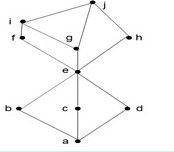Note: We have tried to upload as much as we can, all the question and answers might be shuffled - Please find the answer below each question, some answers might be wrong please review on the last date(some answers might be changed) if you find any wrong answer please comment down below.
Question 1:
Let R be relation defined as R ={ <x,y>/ x - y is
divisible by m,a positive integer}
Which of the following is true?
Select one:
a. R is only reflexive
b. R is neither reflexive nor symmetric
c. R is reflexive and symmetric
d. R is R is reflexive, symmetric and transitive
Correct Answer: D
Question 2:
Consider the recurrence relation : a(n) =2 a(n-1) + a(n- 3)
Then the order of the characteristic polynomial of this
recurrence relation is
Select one:
a. We can not determine
b. 2
c. 1
d. 3
Correct Answer: D
Question 3:
A relation R: S to S
is called a partial order relation if it is
Select one:
a. Reflexive, Antisymmetric, Transitive
b. Irreflexive,Transitive, Antisymmetric
c. Reflexive,Transitive,Symmetric
d. only Reflexive, Transitive
Correct Answer: A
Question 4:
Consider the following diagram. And choose the correct
option from the given
Select one:
a. This is not a lattice
b. represents a improper lattice
c. Represent a proper lattice
d. Does not represent a poset
Correct Answer: C
Question 5:
How many ways are there to distribute six indistinguishable
balls into nine distinguishable bins?
Select one:
a. 3003
b. 3000
c. 3030
d. 3300
Correct Answer: A
Question 6:
Let F be the function such that F(n) is the sum of the first
n positive integers. Give a recursive definition of F(n).
Select one:
a. f(0) = 1, f(n) = f(n − 1) - n for n ≥ 1
b. f(0) = 0, f(n) = f(n − 1) + n for n ≥ 1
c. f(0) = 0, f(n) = f(n + 1) + n for n ≥ 1
d. f(0) = 1, f(n) = f(n + 1) - n for n ≥ 1
Correct Answer: B
Question 7:
Which of the following represents the Hasse diagram of the
the relation ({1,2,3},less than or equal
to )
Select one:
a.
b.
c.
Correct Answer: C
Question 8:
What is the generating function for the finite sequence 2,
2, 2, 2, 2, 2
Select one:
a. f (x) = 2(x2−1)/(x6−1)
b. f (x) = 2(x2−1)/(x−1)
c. f (x) = 2(x2−1)/(x2−1)
d. f (x) = 2(x6−1)/(x−1)
Correct Answer: D
Question 9:
Which of the following is true?
Select one:
a. Composition of functions is NOT associative
b. Composition of functions is NOT commutative
c. Composition of functions is Associative
d. Composition of functions is commutative
Correct Answer: D
Question 10:
Which of the following is True?
Select one:
a. Then recurrence relation a(n) = a(n-1) + a(n-2) is
neither linear nor homogeneous
b. Then recurrence relation a(n) = a(n-1) + a(n-2) is always
linear and non homogeneous
c. Then recurrence relation a(n) = a(n-1) + a(n-2) is
always non linear and homogeneous
d. Then recurrence relation a(n) = a(n-1) + a(n-2) is always
linear and homogeneous
Correct Answer: D






